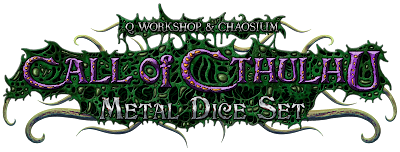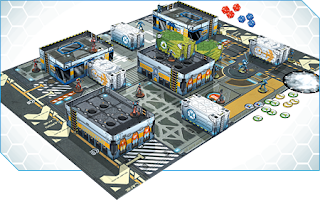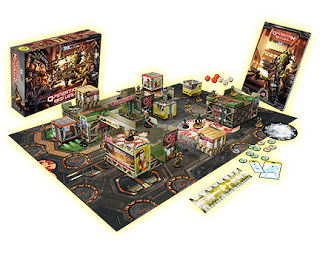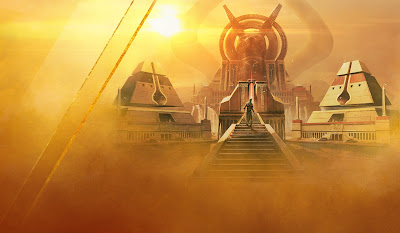Designed by Kalle Malmioja and featuring art and graphics by Ossi Kiekkala and Jere Kasanen, Honshu pushes the boundaries of what a “card game” can do, providing plenty of clever card play in a beautiful presentation that gamers of all sorts will thoroughly enjoy.
Set in feudal Japan, Honshu is a game of hand management, map-building, and resource control. Players take on the roles of nobles seeking to expand their holdings through thoughtful timing, smart tactical choices, and creative tableau building.
Honshu, originally published by Lautapelit.fi, was a sold-out hit at Essen 2016 and, thankfully, the team at Renegade Game Studios is publishing Honshu for North American gamers in early 2017.
Honshu is primarily comprised of a deck of 60 cards, numbered 1-60, each of which has a unique 6-square map grid. Players are dealt six cards (for six rounds) and, in turn order, play cards to try to win initiative by playing the highest value card in a round. Players choose which of the map cards they get to place into their tableau in an order determined by the numbers on the played cards.
In a clever but subtle twist, after three rounds, the players pass their hand to an opponent adding tension to the choice of cards you play because you know whatever you don’t play your opponent will receive. After two 6-card rounds, tableaus are scored and the player with the most points win.
Speaking of those tableaus – the map cards have a mix of features including lakes, forests, cities, deserts, resource spots, and factories.
Lakes, Forests, Cities, and Factories all provide end game points – but each scores differently meaning you’ll have to carefully place your cards to maximize scoring opportunities. Another subtle but incredibly compelling twist is that when you place a map card, it must overlap the current tableau by at least one square.
This doesn’t sound like a big deal, but that simple placement rule creates challenges and opportunities. It’s exciting and rewarding when you manage to over-under a card just right to ensure an unbroken city block or an ever-expanding lake.
And Honshu isn’t just about cards – there’s a small set of resource cubes, too. You receive these cubes when you add a card to your tableau that has a resource location on it. These cubes can serve one of two purposes. At the end of the game you can deliver a resource to a matching factory for points. Simple, right?
Not quite, because those same cubes can also be used to increase your initiative when choosing cards. When a card is played during the Card Selection Phase, a player may add an available cube from their tableau which increases the value of the card by 60. Moreover, whatever resource is used sets the resource type for the round, meaning if someone else wants to play a cube to increase their card’s value it must match the previously played cube’s type.
This resource play enhances the simplicity of both the resource management and card selection, and adds some of the toughest decision points to the game. When do you sacrifice a resource to ensure that you pick the card you want? When do you sacrifice guaranteed low points for a chance at a higher point factory? And what happens when a resource location is blocking you from connecting your city units?
Simple choices, puzzling map building, crafty resource management… on top of all of that, Honshu also has a set of optional end game scoring cards that incentivize a specific scoring strategy which increases the competition for cards with certain features. Maybe columns of forests will score bonus points or factories can take two resources instead of just one.
These cards help add variety to gameplay and up the ante during the Card Selection Phase as players vie for first pick of the cards.
In Honshu, each choice you make has a lasting impact and watching your map grow is rewarding. While you set your sights on a strategic plan for your map, you must earn your ability to fulfill that plan through savvy card play.
And your ability to be flexible and creative with your map tableau while maximizing your resources will ultimately determine your success. Honshu is truly a beautiful, simple, and deeply compelling game.
“There’s a sense of accomplishment as you see your city grow and spread.” – Tom Vasel, The Dice Tower
|
Blog Especializado em Jogos Modernos e Colecionáveis RPG - Jogos de Tabuleiro - Jogos de Estratégia - Card Games - Colecionáveis (Facebook) = www.facebook.com/giantheroes (Twitter) =twitter.com/giantheroes (Site) = www.giantheroes.com.br (Instagram) = @giantheroes
terça-feira, 28 de fevereiro de 2017
Jogos de Tabuleiro - Honshu
Card Games - A Game of Thrones LCG - Watchers on the Wall
A Game of Thrones: The Card Game - Watchers on the Wall Expansion
by Fantasy Flight Games
Jogos de Tabuleiro - Iron Dragon da Mayfair Games
“It was perhaps naïve of us to believe that our time of peace and calm, which had lasted for decades since the Great Peace was signed, could last forever. You will forgive us that hope. Needless to say, it did not last. In fact, our adversary had been watching us for years, waiting for her time to strike. Of her ultimate goals we can only guess, but her actions were crystal clear: the destruction of our burgeoning railways at any cost.”
Archmage Gaelwyth Grae, lecture to the Wizards College of Wikkedde
The classic Empire Builder series of train games has taken players around the world and beyond — from North America and Australia, Europe and Japan, to India and even the Martian desert. And soon, players will be able to return to a magical land of steampunk, dragons, and trains with Iron Dragon!
After a century of hardship and war, the lands of Darwinina are beginning to recover. Elves, dwarves, and men are finally beginning to repair their shattered world. To do so, they will need to rebuild what was lost: the great rail networks and the mighty Iron Dragons that ride them. You have been tasked with overseeing one phase of that reconstruction. Will you be able to rise to the top and best your fellow engineers, building the greatest transportation network in all the land?
Iron Dragon is a fan-favorite addition to Mayfair Games’ classic Empire Builder series of crayon rail games. In these games, players use erasable crayons to create trade networks and then draw demand cards, instructing them as to what goods the cities need, making deliveries, and (hopefully) winning the game by being the first player to reach a predetermined amount of money.
While most of the Empire Builder games are set in real world environs, a few are rooted in fantastic locales, like Iron Dragon, which takes place in a steampunk fantasy realm where great trains of dwarven design race across a magical land.
Given its fantasy setting, players trade goods they’re familiar with such as cattle and fruit, but also more exotic goods. For instance, the cities of Darwinina require wands and spells for magical warfare, while animals from mundane sheep to exotic dragons are in high demand across the lands. Luxury goods are also extremely lucrative, whether they are the finest underground ale or a strong Halfling pipeweed.
Players draw demand cards to receive delivery assignments, which detail the goods that
are in demand as well as the price a city is willing to pay for said item. Once a player successfully moves a train to the listed location, they receive compensation as shown on the demand card.
Along the way, players will have to contend with random events that add a measure of uncertainty to their carefully constructed logistical plans. For example, the “Elven Antirailroad Activists Attack!” event prohibits trains from moving through forests, as well as prevents any train from leaving the elven kingdoms of Glyth Gamel or Silvarre.
Iron Dragon also introduces the concept of foremen to the Empire Builder series. As a fantasy world, the game features numerous exotic species, including orcs, wee folk, trolls, elves, catmen, and, of course, humans. Each of these species has a preferred terrain and can make building in those regions easier. Dwarves, for example, are adept at building track through mountainous terrain. Throughout the game players can exchange one foreman for another, but there’s a cost attached, so they must balance how much a foreman can save them versus the cost of the new hire, which is 1 gold piece (GP) for the top foreman, drawn from the draw deck or the discard pile, or, alternatively, players can pay 5 GP to search through the deck and retrieve a foreman of their choice. As always, plan carefully!
The main play area of Iron Dragon is a “new world” discovered and settled by a culture on the other side of the ocean. Part of the “old world” appears on the map giving players another avenue for trading their goods, if they’re willing to brave the uncertainties of a sea voyage. However, players don’t buy ships, but book passage on whatever vessel is in port when they arrive. If players aren’t satisfied with the ship available to them, they can wait a turn for another to dock. Once they find a ship they like, players pay the listed cost and load their entire train on board, moving a certain number of spaces over the water terrain each turn, either to the old world or to a port elsewhere in the new world. While this can greatly shorten a voyage, or offer a new avenue for trade, players need to be careful as their main avenue for transporting goods is the building of rail networks, so the use of ships is a tactical decision that must not be overused.
Players can also pass through the ‘Underground’, the dangerous area where denizens such as the dreaded orcs thrive. Each turn a train spends underground they must pay a bribe to an orcish overseer, making this travel particularly expensive, especially for longer journeys. Players who wish to make extensive use of the Underground should consider hiring an orcish foreman, who removes the need to pay these bribes and will even collect bribes from other players!
To win the game, a player must connect seven of the eight major cities to their rail network and possess 250 GP. Once a player gains 250 GP, the current round is completed, GP is tallied, and the player with the most money is declared the winner. Note, for the purpose of winning the game, only cash on hand is counted, not money spent building track or hiring ships.
We hope you enjoyed our preview of Iron Dragon and you will visit the wonderful and fantastic world of Darwinina when the game re-releases in 2017!
About Iron Dragon: Iron Dragon was designed by Darwin Bromley, Tom Wham, and the Empire Builder Design Team for 2-6 players, ages 12 and up. Games take between 2-4 hours to play.
segunda-feira, 27 de fevereiro de 2017
Call of Cthulhu RPG - Keeper Rulebook 7th Edition
Horror Roleplaying in the Worlds of H.P. Lovecraft
The Old Ones ruled the earth aeons before the rise of man. Traces of their cyclopean cities can still be found on remote islands, buried amid the shifting desert sands, and in the frozen wastes of the polar extremes. Originally they came to this world from the stars. They sleep now, some deep within the earth or beneath the sea. When the stars are right they shall again walk the earth.
Call of Cthulhu is a tabletop roleplaying game based upon the worlds of H. P. Lovecraft. It is a game of secrets, mysteries, and horror. Playing the role of steadfast investigators, you travel to strange and dangerous places, uncover foul plots, and stand against the terrors of the Cthulhu Mythos. You encounter sanity-blasting entities, monsters, and insane cultists. Within strange and forgotten tomes of lore you discover revelations that man was not meant to know. You and your companions may very well decide the fate of the world.
This book, the Keeper Rulebook, contains the core rules, background, guidance, spells, and monsters of the game. It is intended for use by the Keeper of Arcane Lore (the Keeper) — that player who will present the adventure to the other players. You must have at least one copy of this book to play Call of Cthulhu. The other players, the Investigators, should have one or more copies of the Investigator Handbook, containing expanded rules for character creation, skills, occupations, equipment, and more.
Call of Cthulhu, 7th edition, is backwards-compatible with all other available Chaosium titles.
Hardcover. By Sandy Petersen, Mike Mason, Paul Fricker, and Lynn Willis. Cover art by Sam Lamont; Chapter Illustrations by Jonathan Wyke, Paul Carrick, Rob Gould, Fran.ois Launet, Victor Leza, Charles Wong, Mike Perry, Nicholas Cloister, Antonio Luis, Kalli Schulz; Interior Illustrations: Rachel Kahn, Grilla, Chris Huth, Lo.c Muzy, Paul Carrick, Scott Neil, Jonathan Wyke, Victor Leza, Sam Lamont, Celeste Burcham, Caryad, Antonio Mainez, Tom Sullivan, Marco Morte. Cartography: Steff Worthington.
Dados e Acessórios - Q-Workshop e Chaosium
Coming soon from Chaosium and Q-Workshop—it's time to
arm yourself for the uneven fight with the Elder Gods from
the Cthulhu Mythos!
An official accessory to the best-selling Chaosium RPG Call
of Cthulhu, these dice will be made of tin, with the most
detailed design Q-Workshop has produced so far.
Subscribe at the link to be the first to know when the
campaign launches...
Miniaturas - Infinity de Corvus Belli
O que é Infinity, jogo de miniaturas futurista colecionável?
A tabletop wargame
Infinity is a tabletop wargame in which sci-fi themed
miniatures are used to simulate futuristic skirmishes.
Infinity recreates Direct Action operations, high-stakes
missions in the battlefront or behind enemy lines,
where
victory or death are a trigger pull away. Players
command a small group of elite soldiers, chosen for
their
adequacy to the mission parameters at hand. Each
battle calls for a different composition, and building an
effective team from hand-picked members of different
regiments is key to a successful operation.
Infinity is a groundbreaking, dynamic system that allows
you to make meaningful, fun choices throughout the
entire game sequence, and gives you the tools to
implement any number of strategies with realism and
flexibility.
Miniatures
Each miniature represents a soldier, a robot or a
creature of some kind, capable of independend
movement and action. As a game element, miniatures
include the circular base they are affixed to. Miniatures
have different in-game point Costs depending on their
combat prowess, their armament and their gear.
[Check out the Rulebook for more on how to build your
own army lists].
Infinity miniatures have a scale in millimeters. The
standard scale, 28 mm, represents the height of an
average man. All other miniatures are scaled up or
down around that average figure.
Visit our online store to browse our extensive and ever-
updating range.
What you need
To play an Infinity game, you will need:
- A Rulebook, army lists and Weapons Chart.
- Infinity miniatures.
- 20-sided dice (at least three per player).
- A game table (ideally 4 by 4 feet).
- Templates (Circular, Large and Small Teardrop) and
- Markers.
- Plenty of scenery and terrain. Painstakingly crafted or
- improvised, their importance will soon become
- apparent.
- Measuring tape.
Our partners offer a wide range of products for all your
Infinity needs (terrain, markers, templates, and more).
Abaixo você, terá o link gratuito do livro de regras em
PDF
Magic The Gathering - Nova coleção Amonkhet
Nova Coleção de Magic the Gathering em 28 de Abril de 2017
AMONKHET
The desert oasis of Amonkhet forges warriors. You have
trained your entire life for a chance to face the Trials of
the Five Gods and join the elite ranks of the Worthy.
Using your strength, speed, and cunning, overcome
deadly challenges and rise above the competition to
claim an honored place in the Afterlife!
Set Name: Amonkhet
Block: Set 1 of 2 in the Amonkhet Block
Number of Cards: 264
Prerelease Events: April 22-23, 2017
Release Date: April 28, 2017
Launch Weekend: April 28-30, 2017
Game Day: May 20-21, 2017
Magic Online Launch: May 3, 2017
On Sale in Magic Online: May 8, 2017
Pro Tour Date: May 12, 2017
Official Three-Letter Code: AKH
Jogos de Tabuleiro - Betrayal at House on the Hill Expansion - Widow´s Walk
Lançamento Muito Irado da Avalon Hill!!!
Expansão do Grande Sucesso Betrayal at House on the Hill
The house on the hill has a wicked reputation. Those who dare to darken its door often leave steeped in madness and despair—if they leave at all.
Now the horror reaches new heights with Widow’s Walk—the first-ever expansion for the critically acclaimed board game Betrayal at House on the Hill. The house is expanded with the addition of 20 new rooms, including the roof, a previously unexplored floor. Also in its halls you will find new monsters, items, omens, events, and 50 brand-new haunts, penned by an all-star cast of contributors from the world of gaming and entertainment. In Widow’s Walk, terror and panic are taken to a whole new level.
Enter if you dare. Exit if you can.
Assinar:
Postagens (Atom)













